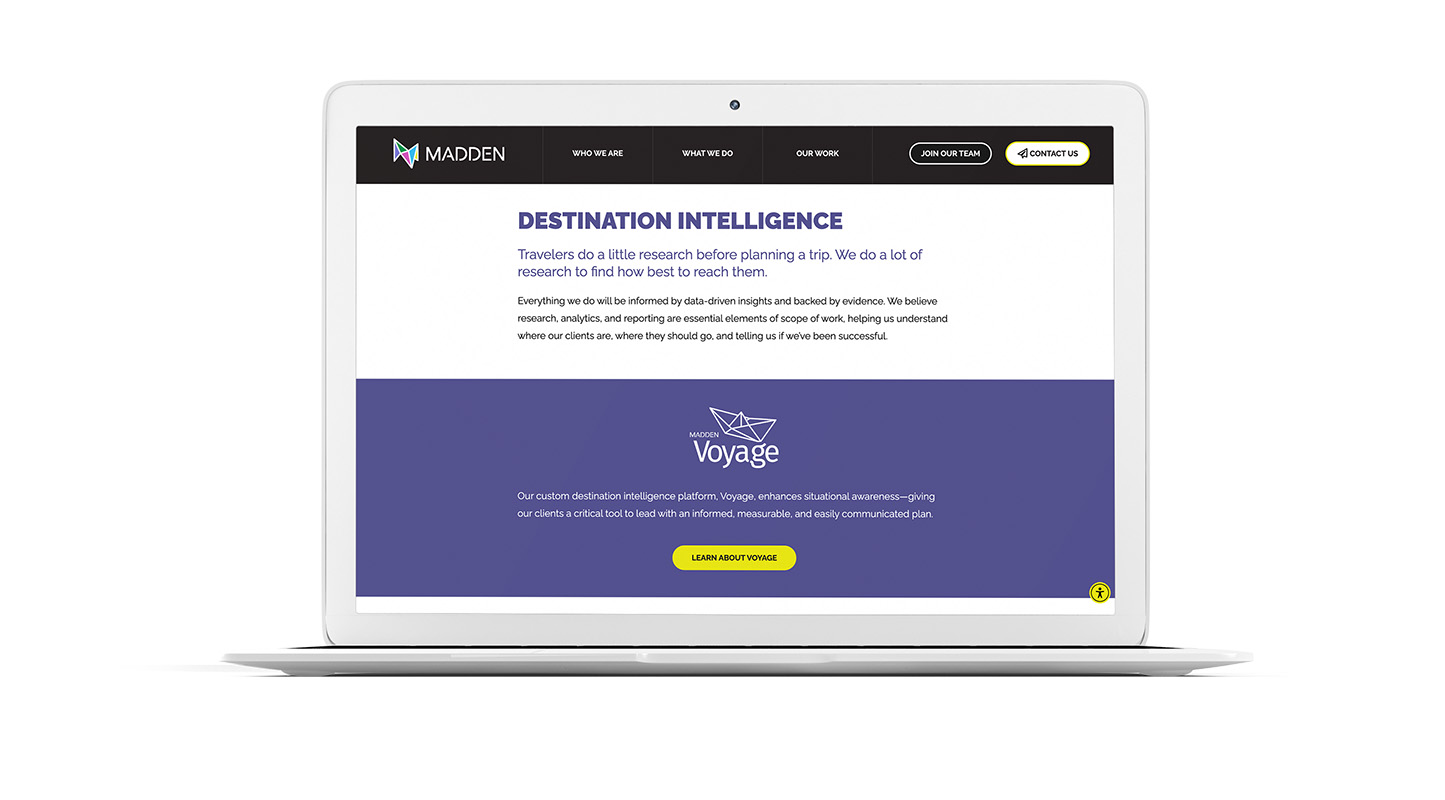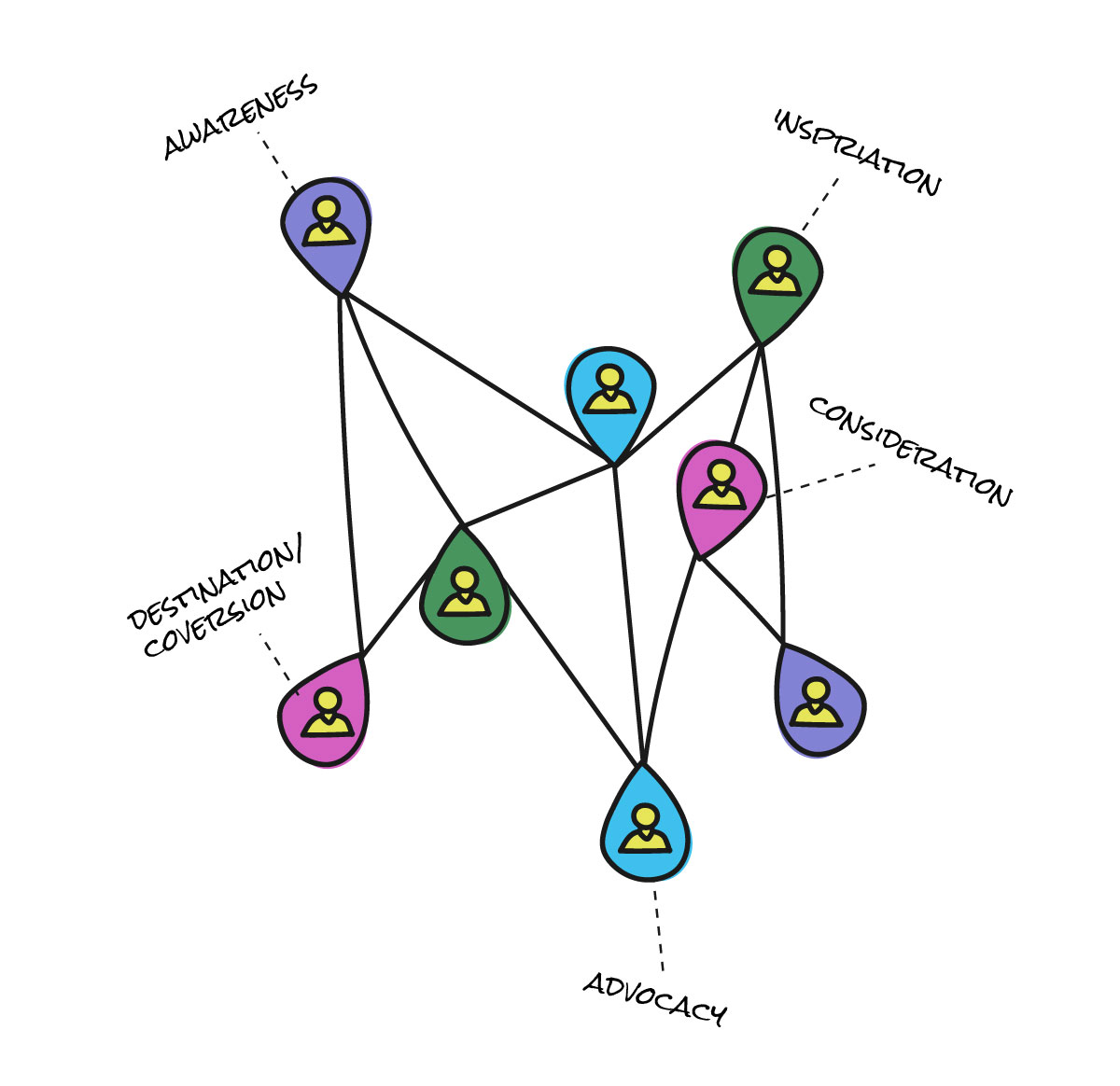What DMOs Can Learn About Marketing Measurement from Adobe Part 3: Connecting Marketing Efforts to Community and Economic Outcomes
July 24, 2024
For DMOs, with no control over the final point of conversion, tracking success or return on investment isn’t always easy. Part one looks at Adobe’s model and how DMOs can apply it to manage and measure their marketing impact, while part two dives deeper into the challenges of marketing attribution for DMOs.
Integrating a DDOM Approach Using KBOs and the Play-to-Win Framework
Adopting Adobe’s Data-Driven Operating Model (DDOM) aligns seamlessly with evolving DMO measurement toward Key Business Objectives (KBOs). Utilizing a DDOM-style approach within a KBO framework, DMOs can enhance their strategic narratives, connecting marketing efforts to meaningful community and economic outcomes. This integrated approach ensures that every marketing dollar contributes to achieving well-defined KBOs, fostering sustainable growth and community engagement.

First, map the visitor’s journey with clear KBOs and relevant KPIs for each phase.
These phases might look different for your destination. Still, by using the Play to Win strategic framework (a method we help our clients with here at Madden), DMOs can define their North Star or “Winning Aspiration,” ensuring that all marketing activities align with long-term strategic goals.
The Play to Win Framework involves five key steps, forming a “strategy cascade”:
1. Aspiration: Define what winning looks like for your destination. For example, increasing tax collections, improving economic impact, or even using your existing mission statement.
2. Where to Play: Identify key markets and segments. For instance, targeting high-value tourists from specific regions or increasing meetings and convention business.
3. How to Win: Develop strategies to help your organization address the first two steps. This is where you develop your KBOs, aligned to the visitor journey that mimics Adobe’s customer journey or customized to your destination.
4. Capabilities: Determine the necessary capabilities to execute and measure these strategies. This includes identifying needed partners, services, media types, and data sources—creating your ‘shopping list.’
5. Management Systems: Implement systems to measure and manage progress, establish ownership of individual KBOs and visitor journey phases, determine regular reviews of KPIs, and decide how to adjust strategies based on performance data.
Rethink Attribution Using KBOs
With clear KBOs and relevant KPIs in hand, you could consider two alternatives:
1. Build your own DDOM-style visitor journey
For example:
- Awareness: KBO: Increase brand awareness (KPI: Impressions)
- Inspiration: KBO: Engage potential visitors (KPI: Website visits, social media followers)
- Consideration: KBO: Nurture interest (KPI: Email sign-ups, visitor guide downloads)
- Destination/Conversion: KBO: Attribute in-market spend and stays post-media impression (KPI: Attributed bookings, visitor spend, experience pass sales)
- Advocacy: KBO: Turn visitors into advocates (KPI: Repeat visitation, Net Promoter Score)
This is just one of many variations; feel free to modify or use AI tools to create a visitor journey that reflects your destination’s relevant markets and situation better. It’s crucial to acknowledge that the visitor’s path to purchase is rarely linear; thus, it’s essential to consider how your KBOs and subsequent supporting KPIs interact and correlate with the overall progress toward your winning aspiration.
2. Eschew the visitor journey altogether, but maintain a DDOM-style philosophy. Namely, consider how your KBOs can collectively work together to serve your “winning aspiration.” How does success in one KBO translate into success for another? Let’s look at an example. After working through the Play to Win framework, you determine that your winning aspiration is to increase tax revenue collection by 5% YoY. To help your DMO hit that target, you’ve created two KBOs. The first KBO is to increase your destination’s brand awareness in a new growth market (let’s call it Denver), with brand recall and impressions deployed in the market as primary KPIs. The second KBO is to increase your destination’s overall length of stay, with length of stay (LOS) as your primary KPI. Let’s assume that although the current visitation volume is low in Denver, those who visit tend to have an LOS of 3x that of the average. If the first KBO, focused on building brand awareness and spreading the word about your destination, is succeeding according to the primary and secondary KPIs you’ve set and subsequently, in a few months, you also begin to see a rise in the overall LOS—the primary KPI for your second KB—you could similarly communicate that correlation to how Adobe communicates the downstream effect of success in one segment of its customer journey on all the others. When considering the KBOs you’re creating for your organization, the key is to consider how they might interact with all the rest. Is there synergy between them that creates a ‘tow’ effect where success begets more success in every aspect of your strategic plan?
Invest in a Unified Data Platform
Consider an investment in a customized destination intelligence or CRM platform that reflects the visitor journey in a similar style to DDOM and supports better tracking KBOs, supporting KPIs, and enabling data-driven storytelling. At Madden, we’ve continued to evolve our Voyage intelligence platform to better support this initiative for clients.

Focus on Strategy First, Measurement Second
Use a framework like the Play to Win system to create a cohesive strategy connecting your North Star/Winning Aspiration with day-to-day tactics. The strategy cascade in the Play to Win framework will help you better define the KBOs, supporting KPIs, and necessary data/research resources needed to measure and communicate your organization’s strategy and value proposition.
Reevaluate Vanity Metrics
Remember, there are no vanity metrics, just misused ones. Any legitimate metric can be helpful if it supports and can be correlated to a well-crafted and strongly measured KBO. Using Adobe’s customer journey as an example, you can create strong data-driven narratives linking upper funnel/early visitor journey metrics, like in our Denver example above, to downstream impacts on KBOs (e.g., website visits or an increased LOS). Just as Adobe found with organic web traffic and its effects on both downstream KPIs and top-line financial metrics, “vanity metrics” like impressions can serve as valuable predictive indicators that can be correlated with success metrics later in the visitor journey or support one or more KBOs.
Balanced Investment
Consider how you are allocating your budget between fixed and variable investments. Ensure fixed investments in intelligence platforms or website improvements enhance the effectiveness of variable investments in media buying, for instance. It’s also worth considering what percentage of your total marketing or operational budget, for example, is being dedicated to fixed investments like research, intelligence platforms, training, and your website. Although opinions vary, 10-20% of your marketing budget is a solid place to start, considering how much to allocate toward these resources. Also, consider how widespread the impacts of these investments will be across the visitor journey and your KBOs.
Establish Clear Accountability
As a management philosophy, Adobe’s DDOM focuses on consistent measurement and understanding performance gaps. By mapping the entire customer journey, from Discover to Renew, Adobe ensures that every segment is tied to specific, outcome-focused metrics with a clear line of ownership for each. This approach helps pinpoint which tactics are working, which need adjustment, and who determines what new course should be taken. DMOs can adopt this method by clearly defining ownership of each KBO and/or visitor journey stage while regularly reviewing associated KPIs to ensure alignment with overall strategic goals as determined by your ‘Winning Aspiration.’ Establishing clear accountability and ownership of KBOs and KPIs ensures that the organization is committed to these objectives, starting from senior leadership down.
Focus on the traveler’s Journey
While the DMO industry’s attribution challenges are unique (and at times downright frustrating), considering a traveler’s journey-focused approach, similar to Adobe’s Data-Driven Operating Model, and/or a strategy centered on Key Business Objectives. By focusing on the entire traveler’s journey and building strategic narratives based on well-defined KBOs, DMOs can more effectively link marketing activities to tangible business outcomes, ultimately driving growth, elevating their role within the travel ecosystem, and establishing a clear value proposition to their community.




